How a Smart Building Enables New Ways of Teaching and Learning: An Example from Tokyo
Commonly smart buildings are mainly associated with using ICT in order to make a building more energy-efficient. But this is only one aspect – albeit an important one. A smart building offers many more possibilities, like more flexible usage of the spaces in the building, or new forms of interaction between people or with the building itself. A particularly interesting aspect is the use of a smart building in educational institutions, as such buildings enable new forms of teaching and learning. The recently opened Faculty of Information Networking for Innovation and Design (INIAD) at Toyo University in the Akabanedai town of Tokyo exemplifies very well the impact that a smart building can have on these activities.
The peculiar design of the new HUB-1 building, with its particle-like flapping panels and the combination of wood, aluminium and concrete, immediately catches the eye. It was architected by the renowned Kengo Kuma, whose works also include the ArtLab at the EPFL in Lausanne as well as the new National Stadium for the Tokyo 2020 Olympics. Kuma’s designs often feature this mixture of traditional materials with modern and functional architecture, combining it in new and sometimes surprising ways. The design is particularly matching for the curricula taught at INIAD. INIAD aspires to prepare young people to tackle the issues of the digital society. Data, networks and information exchange play a crucial role in the digital society, and computer science – and in particular the Internet of Things (IoT) – are the foundational topics that are taught at INIAD. However, limiting education just to computer science is too limited and would risk resulting in a too technocratic society. Interdisciplinarity and a holistic approach are important if society wants to be able to address the global challenges it faces. The curriculum at INIAD thus combines science education with humanities and arts. So like the HUB-1 building is combining tradition with modernity, so is the curriculum combining several fields of study: modern computer science with more traditional studies in humanities and arts.
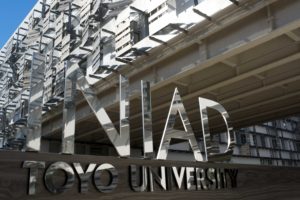
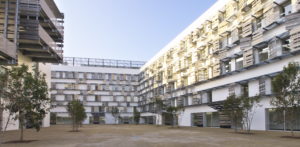
Figure 1: The INIAD HUB-1 building from the outside
The HUB-1 building has been designed as a smart building in several ways. Firstly, smartness is in the architecture itself, reducing the energy needs of the building. Secondly, the building is full of networking and approximately 5’000 IoT devices used not only in the operations of the building, but also directly in research as well as in teaching. With his 30+ year-long background as a leading researcher in IoT and ubiquitous computing, Professor Ken Sakamura was responsible for the interior of the building as well as the IT equipment and networking architecture, and thus designed the building equipment so that it could fit those purposes. The building is in effect a real-world IoT installation, and it can be used as a research and test lab to study how IoT can be used to facilitate life, but also to discover and overcome challenges in the daily use of IoT.
In this article though, we’d like to focus on how such building changes how students are taught. The use of the “Flipped Classroom” model, where students study the theory by themselves using video lessons and other online information sources and where classroom lessons are used for coached practical exercises deepening the understanding how the theory is applied, as well as massive open online courses (MOOCs) that have gained a lot of interest in the last few years. At INIAD such teaching models are also applied, supported by the HUB-1 building. Instead of using large audience halls as in traditional universities, most lecture rooms here are small to enable coaching of student groups, lively and focused interactions between the students but also between students and teachers. Students bring their own laptops or tablets to access all information needed. Whiteboards are not needed, rather the network allows the students to follow the lecture on their devices, and to take individual notes on their copies of the teaching materials. The same concept is also applied at the library: There are no paper materials at all (!); the shelves were created to stress this shift of paradigm. Instead of having many physical books standing around on bookshelves, making it hard to find what one is looking for, tablet displays are used to give access to all materials. This allows keeping the physical library small, freeing space for other usage, without limiting the available sources of information.
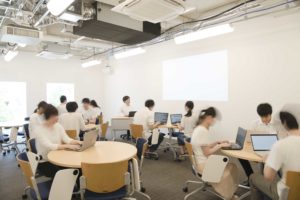

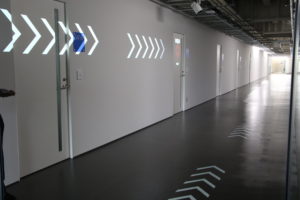
Figure 2: A typical classroom, the networked library with tablet displays, and room directions projected onto a wall
All equipment in the building is networked, also for example the lights, and APIs are available to control its behavior. So in addition to the online information access just described, students in a programming class are able to interact with the building directly. As students are learning how to program against APIs, they can, for example, turn on and off lights in the classroom from their computer. Students can thus immediately observe the effects of their programs. The learning experience through effecting change in the physical environment with immediate feedback is more fun for the students, but not just that: It also leaves a deeper impression and strengthened skills.
Walls in a smart building are more than physical structures that keep the roof from falling down or divide the space into different rooms. Walls can become information displays as well as interaction spaces by using projectors as well as sensors and cameras that detect what people are doing. A simple example of this in HUB-1 is the possibility to project the directions to a room with arrows etc., guiding new visitors to where they need to go. (See Figure-2)
To summarize, the INIAD HUB-1building is an excellent example of the possibilities a smart building offers, not only regarding the minimization of resource usage, but also regarding changes in teaching and learning, preparing the people for the digital society. The technology and networking equipment provides a foundation for supporting modern curricula, but it should also enable future usages that we are currently not yet envisaging. It will be interesting to see how the building and its usage changes as the digital society is maturing.
 Create PDF
Create PDF
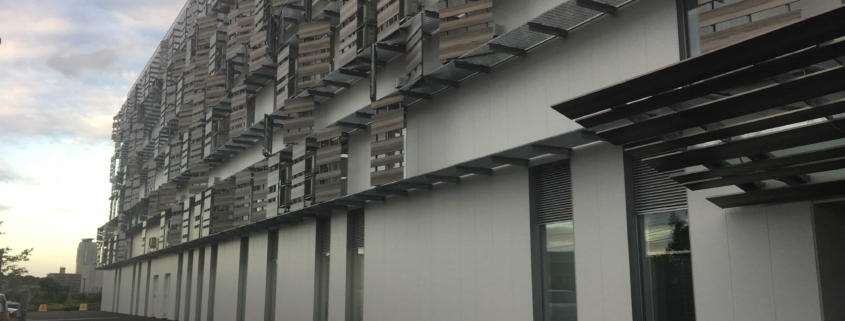
 Contributions as RSS
Contributions as RSS
Leave a Reply
Want to join the discussion?Feel free to contribute!